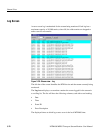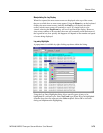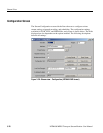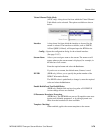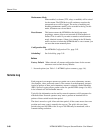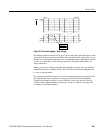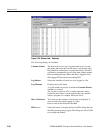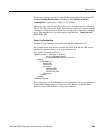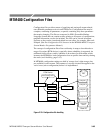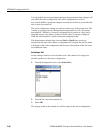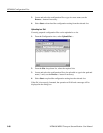
Stream View
3-80 MTM400 MPEG Transport Stream Monitor User Manual
Maintenance Mode
When enabled, no alarms (TTL, relays or audible) will be raised
for the stream. The RTM device will continue to monitor the
stream and errors will be logged. The action of enabling and
disabling maintenance mode is also recorded in the log. In this
mode, all buttons are colored black.
Reset Stream
This button returns the MTM400 to the initial state upon
acquiring a stream; all tests are reset and all SI information is
flushed. This is useful if you make a seamless switch between
nearly identical streams, if there is no change in the SI identity
and/or versions to inform the MTM400 that is a new stream, you
can reset the stream manually here.
Configuration Slot
See MTM400 Configuration Files, page 3
-85.
Scheduling* See Scheduling, page 3-91.
Buttons
Factory Default When selected, all stream configuration items for the current
stream are reset to their factory defaults.
* - licensed options (see Table 1-5: MTM400 options summary, page 1-6).
Service Log
Each program in a transport stream can contain one or more elementary streams
(for example, video, audio and control). The content of each elementary stream is
carried as packets of data; each elementary stream is assigned a Packet Identifier
(PID). Service Logging allows packet counts for specified PIDs (range: 0 to 100)
to be collected at a user-definable interval.
Typically this information can be used by network operators to bill customers for
transferred data. Network operators may want to present an itemized bill for
packets of data carried in each time period.
The data is stored as a grid. After each time period, all the counts move down one
position and a new count is started in the top row. The grid is 64 rows (time
periods) deep and 100 PIDs wide. So up to 100 PIDs may be monitored, with a
common timing resolution.



